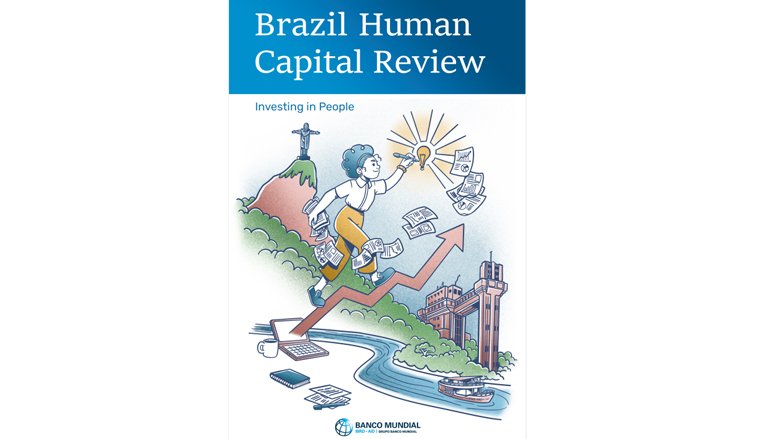The Brazil Human Capital Review (BHCR) is a story about lost talent in Brazil.
It poses the question: what would happen to labor productivity if Brazil were to offer quality education and health to every child, in every part of the country? It also asks: how can the gap between ideal circumstances and what is actually achieved be reconciled?
The BHCR was undertaken as a part of the Human Capital Project, a global initiative of the World Bank Group that aims to alert governments to the importance of investing in people. Evidence justifies this approach. For example, shocks in human capital a century ago due to settlement policies continue to have significant impacts on current development in Brazil. Analyzing trends in human capital accumulation also helps to explain why income inequality is historically high and points to why the average Brazilian remains in poverty over multiple generations
Measurement as a first step of action. The story of lost talent starts by using a new indicator to track
progress towards human capital accumulation in Brazil at the municipal level: the Human Capital Index (HCI). The HCI estimates the expected productivity of a child born today by the age of 18 in a context where education and health conditions remain the same. This framework contributes to policy dialogue in fundamental ways. First, the HCI is a prospective measure. It calculates the expected productivity of the next generation of workers if current circumstances persist.
Higher HCIs today mean higher labor productivity in the future. Secondly, it is straightforward: only key aspects of skills formation are considered. Third, the HCI has a clear narrative around lifecycle: at birth, children need to survive; during childhood, they need to be well-nourished; at school age, they must complete all schooling and active adequate learning levels; and in adulthood, they need to stay in good health.
Fourth, the HCI is output-oriented. It combines mortality and stunting rates, expected years of school (EYS), harmonized learning outcomes (HLO), and adult survival rates in a single index to emphasize outputs rather than inputs. Fifth, the HCI has a clear and simple objective. It does not intend to measure social welfare or to summarize any intrinsic value in human life, but rather proposes an estimate of future productivity if current conditions persist.
The estimates produce a simple final result: the HCI ranges between 0 and 1. A location where an average child has no risk of being stunted or dying before the age of five, receives high-quality education, and becomes a healthy adult, would have an HCI close to 1. Conversely, when the risk of being ill-nourished or prematurely dying is high, access to education is limited, and quality of learning is low, the HCI would approach zero. Measurement as a first step of action. The first key message of this report is that an average Brazilian born in 2019 achieved 60 percent (HCI of 0.60) of their potential human capital by the age 18. Forty percent of all talent in Brazil is undeveloped and invisible to society.
However, the national average only tells us a minor part of the whole story. An HCI equal to 60 percent hides local and regional inequalities in human capital accumulation. Disaggregating the HCI at the municipal level reveals a second key message: many Brazils coexist inside Brazil.
Mapping the HCIs produces a clear snapshot of regional inequality in Brazil: children born in municipalities in North and Northeast Brazil develop approximately half of their full potential talent – or 10 percentage points (0.1 HCI points) less than an average child in a municipality in the Southeast.
